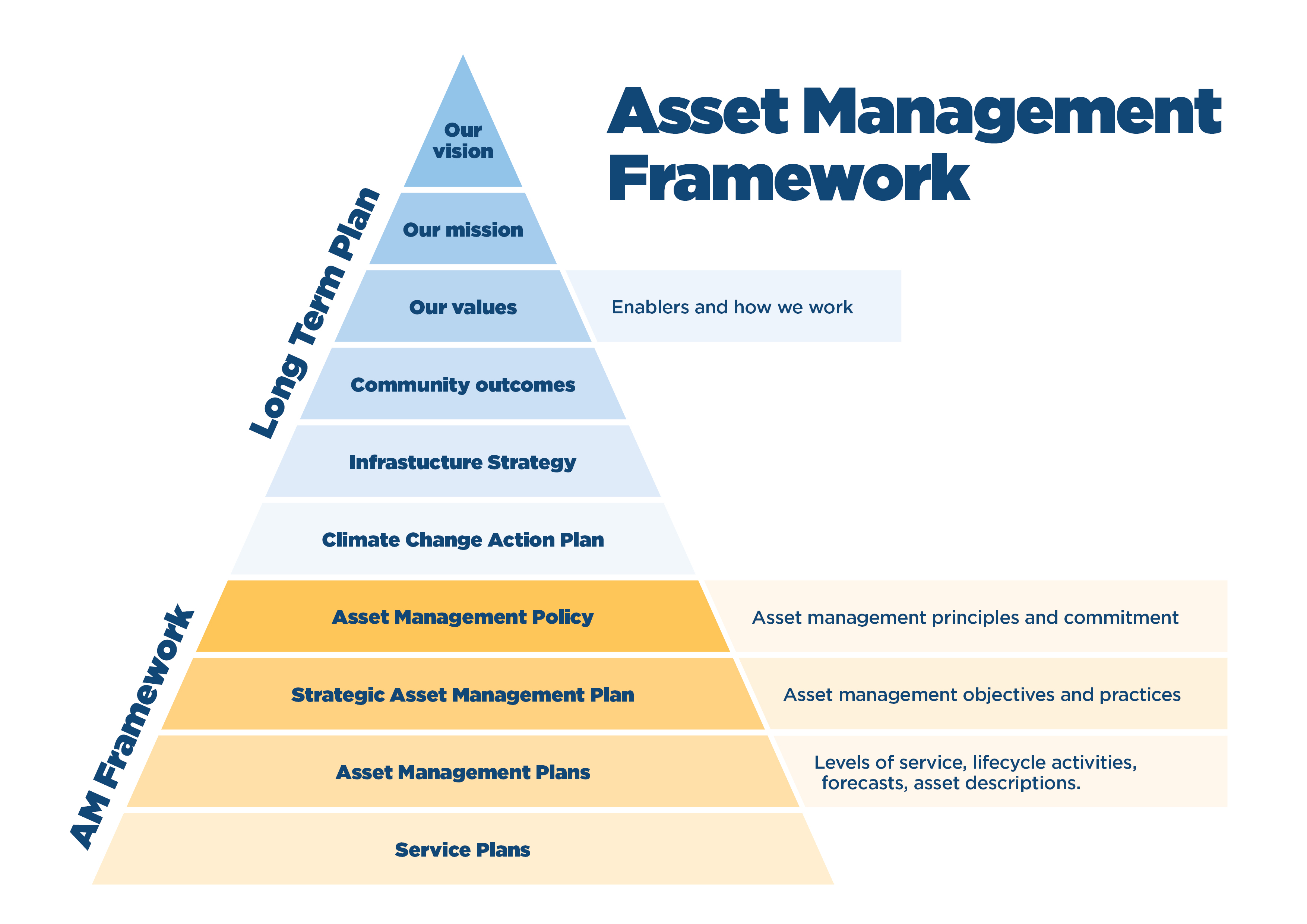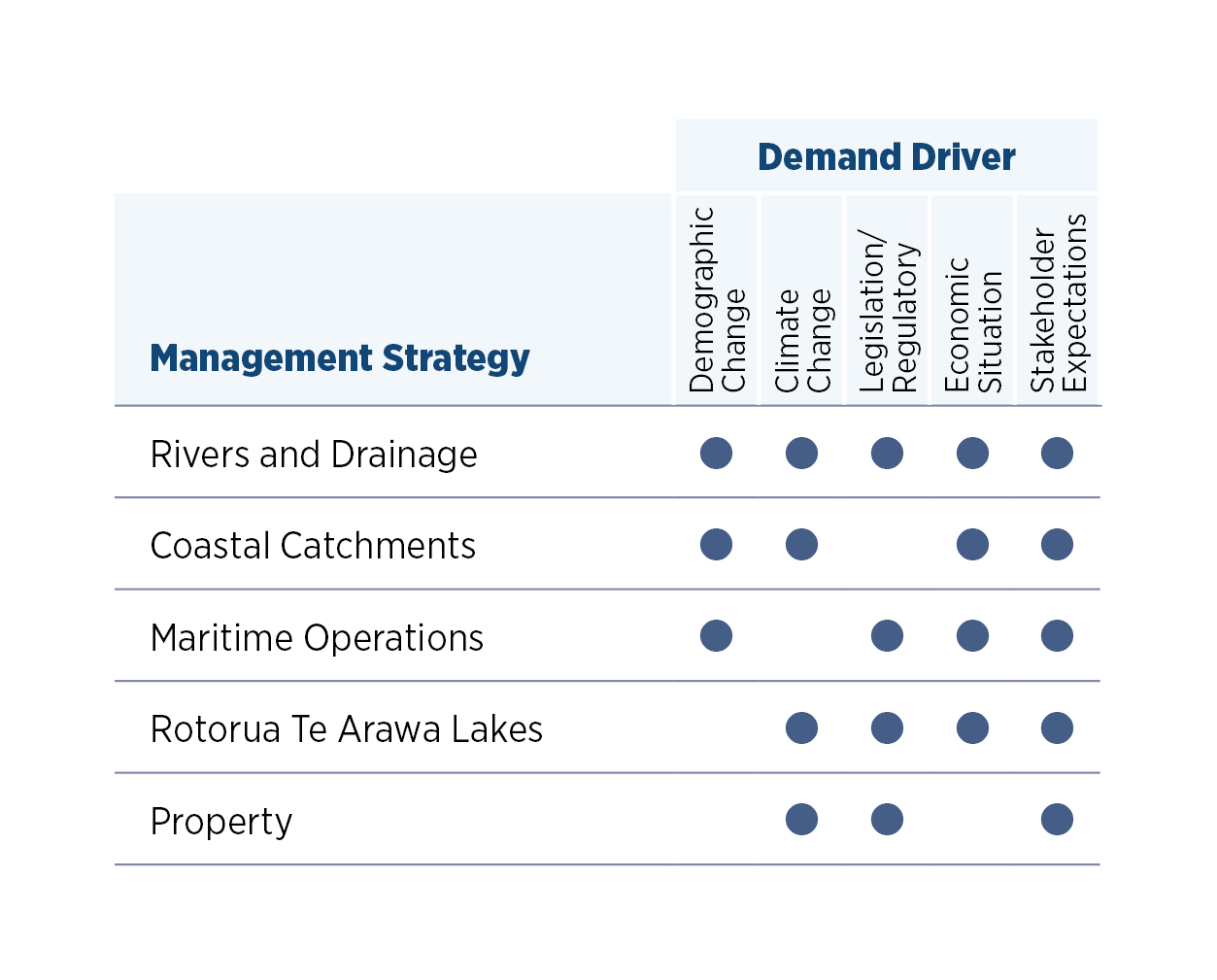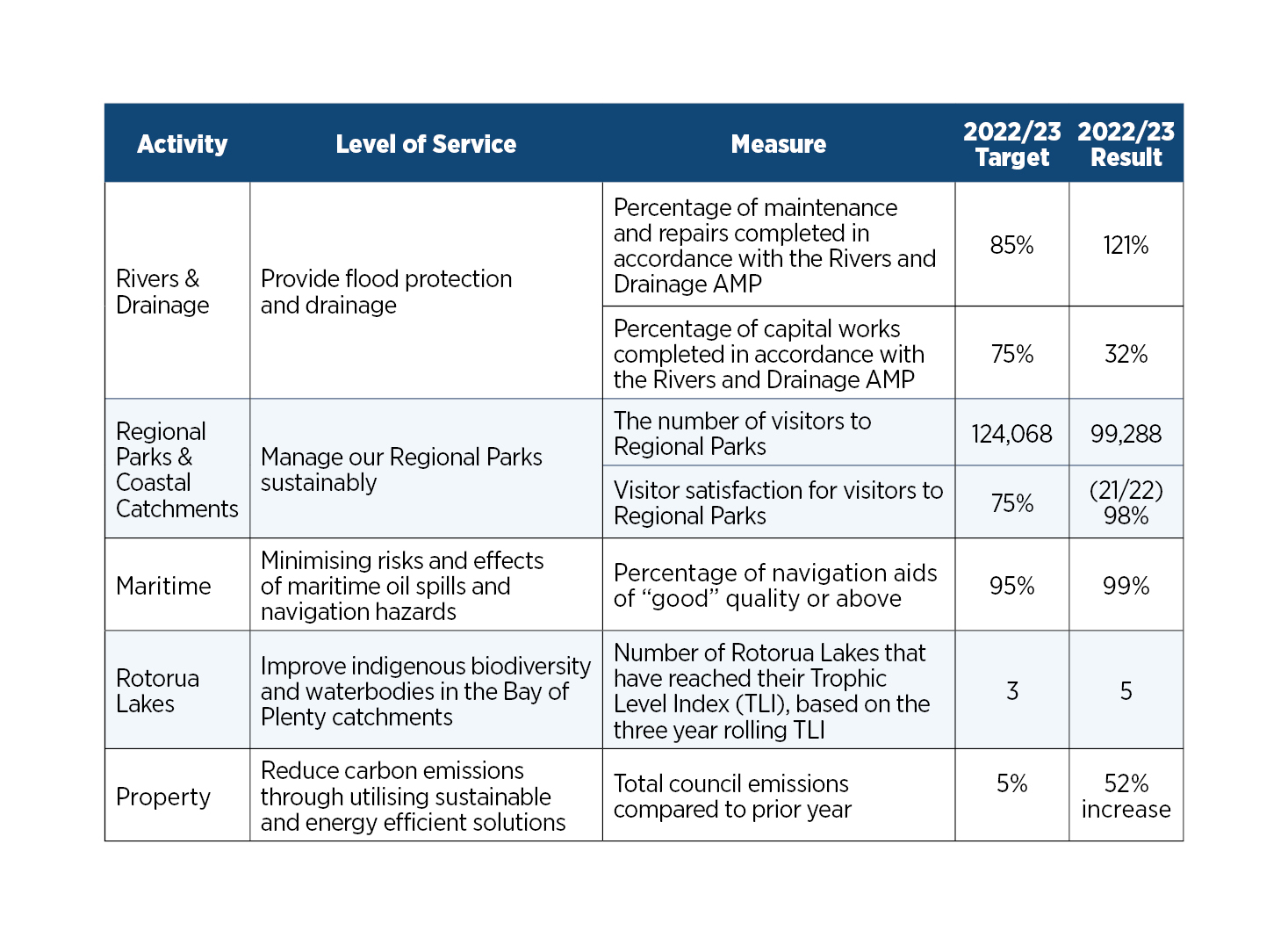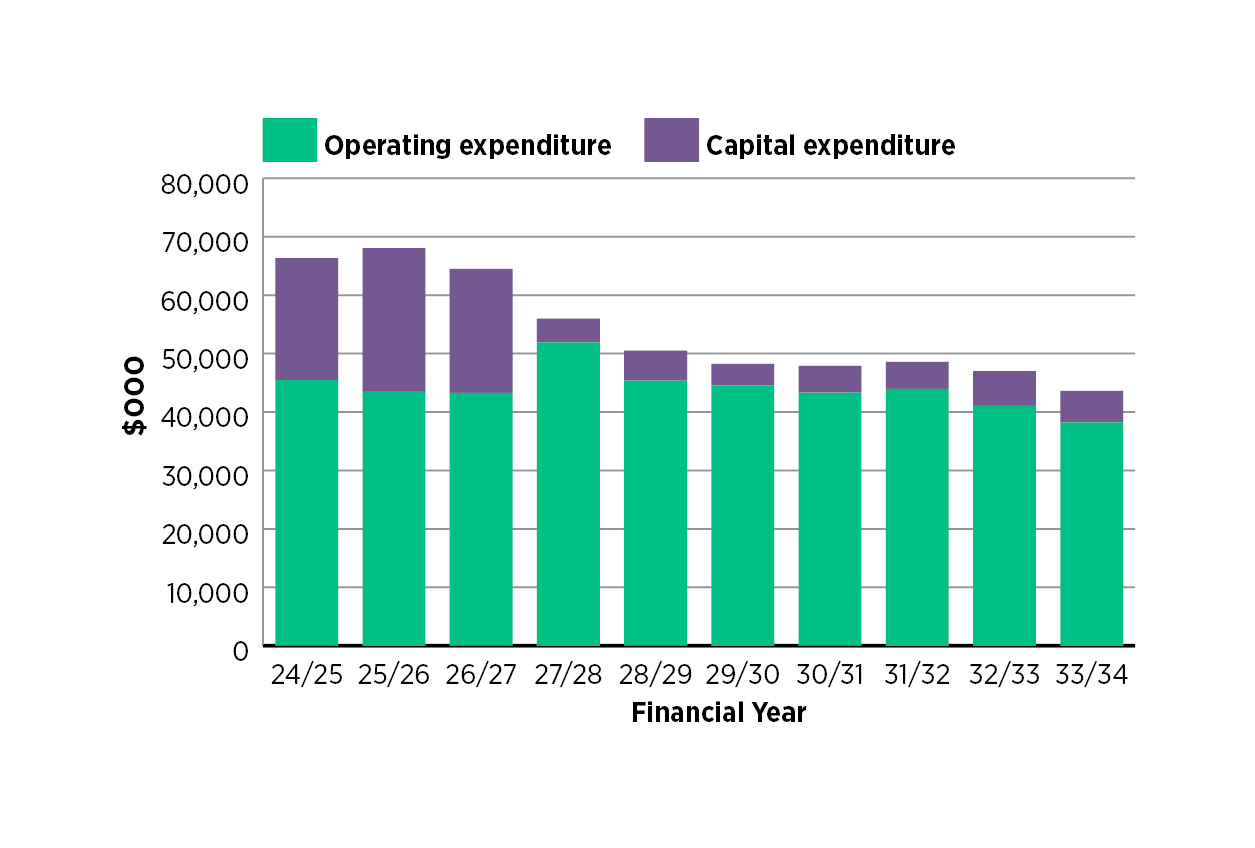Asset Management Framework
Our Asset Management Framework forms the backbone of our approach and includes a well-defined Asset Management Policy and clear Asset Management Objectives, which align with our Strategic Direction and community outcomes. This informs the development of individual Asset Management Plans (AMPs) for each activity area.

Activity and Asset Overview (Part 6)
Regional Council owns, manages, operates, and maintains assets valued at approximately $527.52M (Optimised Depreciated Replacement Cost (ODRC) or book value). Rivers and drainage assets make up more than 80% of our total asset value. However, all asset areas play a critical role in serving our communities and supporting Regional Council's service delivery and strategic goals. These assets are managed through five activity AMPs.

Asset Condition and Performance (Part 6, Section 4)
Assessing the current condition and performance of our assets is vital for providing a comprehensive understanding of each asset's status and future needs, such as the maintenance and renewal investment they require.
Asset condition is a measure of the physical state of an asset which is visually assessed by staff and contractors on a regular basis. Whereas the performance of an asset relates to its ability to support the delivery of agreed levels of service. Asset condition is one component of asset performance.
In broad terms, the condition of over 95% of assets across the AMPs have been assessed as acceptable (excellent to moderate), and less than 5% are assessed as poor or very poor. Assets in poor or very poor condition are prioritised for maintenance, repairs and renewal. Information on the latest condition and performance information available is included in each AMP.
Future Demand (Part 7)
Planning for future demand is imperative to provide an economically sustained pathway to meet the needs of the region. Our biggest challenge in assessing future demand across our asset portfolios is analysing the potential impacts on capital and operational expenditure requirements.
The SAMP has identified five common demand drivers across our activity asset portfolios. Two demand drivers that pose significant challenges are climate change and the economic situation. The SAMP presents existing and proposed strategies to manage demand at a Regional Council-wide level.

Levels of Service (Part 8)
Levels of Service (LoS) are developed as part of Regional Council’s Long Term Plan process, which sets the LoS that Regional Council will deliver to the community.
A summary of the LoS relating to activities that have Asset Management Plans, how these are measured, and recent results are shown in the table below.

Asset Management Approach (Part 9)
Our approach to managing assets and addressing challenges is underpinned by key guiding principles that inform our decision-making: service level objectives, whole-of-life approach, stakeholder engagement, risk management, and sustainability and resilience. We prioritise the needs of our communities, ensuring our assets provide desired service levels, and embrace a whole-of-life approach to derive maximum value from our assets over their lifespan.
We also strive to embed sustainability and resilience in our asset management practices, aiming to manage our assets in an environmentally responsible, economically viable, and socially equitable manner, while ensuring they are robust and adaptive.
Financial Planning (Part 10)
Our financial planning approach is guided by our commitment to ensuring value for money, economic sustainability, and the long-term affordability of our services. Over the next decade, we estimate (uninflated) operational expenditure at $440.8M and capital expenditure at $100M to continue meeting service levels and managing risks.

Audit and Improvement (Part 11)
A central theme of the SAMP is continuous improvement, as we strive to advance asset management maturity across the organisation. A range of improvement items have been identified in the SAMP to be implemented over the next three years.
Priorities include developing an asset management sustainability framework, integrating nature-based solutions, and implementing an investment decision-making framework for all asset activity areas to support informed trade-off decisions between cost, service levels and risk.
These improvements will enhance the effectiveness and efficiency of our asset management practices and also contribute towards our strategic objectives, such as improving sustainability and resilience, enhancing stakeholder engagement, and delivering value for money.


